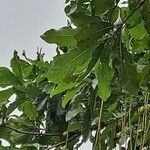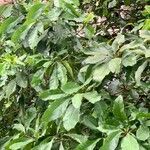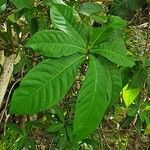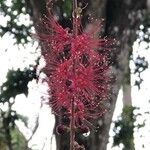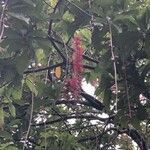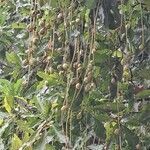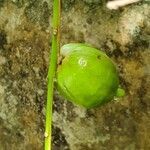| Therapeutic use
|
Anemia, hemolytic (bark), Anthelmintics (bark), Antiprotozoal agents (bark), Antipyretics (bark), Antirheumatic agents (bark), Asthma (bark), Astringents (bark), Bites and stings (bark), Central nervous system diseases (bark), Contraceptive agents (bark), Diarrhea (bark), Dysentery (bark), Emetics (bark), Expectorants (bark), Fishes, poisonous (bark), Gonorrhea (bark), Insect bites and stings (bark), Insect repellents (bark), Jaundice (bark), Labor pain (bark), Malaria (bark), Menorrhagia (bark), Periodontal diseases (bark), Pneumonia (bark), Toothache (bark), Abdominal pain (fruit), Anemia, hemolytic (fruit), Anthelmintics (fruit), Anti-bacterial agents (fruit), Antidotes (fruit), Antipyretics (fruit), Astringents (fruit), Brain edema (fruit), Bronchitis (fruit), Cathartics (fruit), Colic (fruit), Common cold (fruit), Cough (fruit), Diarrhea (fruit), Diuretics (fruit), Dysmenorrhea (fruit), Disorder of ejaculation (fruit), Emetics (fruit), Endophthalmitis (fruit), Epilepsy (fruit), Expectorants (fruit), Eye diseases (fruit), Fever (fruit), Flatulence (fruit), Galactogogues (fruit), Gingivitis (fruit), Gonorrhea (fruit), Hallucinations (fruit), Headache (fruit), Hematologic diseases (fruit), Hemorrhage (fruit), Infection (fruit), Inflammatory bowel diseases (fruit), Intestinal diseases, parasitic (fruit), Lactation disorders (fruit), Leprosy (fruit), Low back pain (fruit), Menorrhagia (fruit), Menstruation-inducing agents (fruit), Migraine disorders (fruit), General tonic for rejuvenation (fruit), Rhinitis (fruit), Scorpion stings (fruit), Seizures (fruit), Skin diseases (fruit), Splenomegaly (fruit), Syphilis (fruit), Ulcer (fruit), Urination disorders (fruit), Vomiting (fruit), Wound healing (fruit), Wounds and injuries (fruit), Anemia, hemolytic (leaf), Anthelmintics (leaf), Appetite stimulants (leaf), Diarrhea (leaf), Dysentery (leaf), Emetics (leaf), Expectorants (leaf), Gonorrhea (leaf), Menorrhagia (leaf), General tonic for rejuvenation (leaf), Antiprotozoal agents (root), Antipyretics (root), Appetite stimulants (root), Common cold (root), Constipation (root), Emetics (root), Expectorants (root), Fever (root), Fishes, poisonous (root), Hypoglycemic agents (root), Laxatives (root), Malaria (root), General tonic for rejuvenation (root), Splenomegaly (root), Vomiting (root), Cooling effect on body (root), Anemia, hemolytic (seed), Bronchitis (seed), Colic (seed), Diarrhea (seed), Emetics (seed), Endophthalmitis (seed), Expectorants (seed), Fishes, poisonous (seed), Flatulence (seed), Goiter (seed), Headache (seed), Parturition (seed), Snake bites (seed), Cholera (unspecified), Piscicide (unspecified), Tumor(Abdomen) (unspecified), Cold (unspecified), Colic (unspecified), Flatulence (unspecified), Gingivitis (unspecified), Gonorrhea (unspecified), Headache (unspecified), Insect bites and stings (unspecified), Periodontal diseases (unspecified), Respiratory tract diseases (unspecified), Splenomegaly (unspecified), Wound healing (unspecified), Lacrimal apparatus diseases (unspecified), Hemostatics (wood), Menorrhagia (wood), Metrorrhagia (wood)
|
